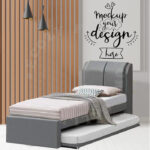In recent years, the rise of smart home technology has transformed the way we live, offering unprecedented convenience, security, and energy efficiency. However, with this rapid advancement comes a challenge: how to effectively communicate the complexities and benefits of these technologies to consumers. This is where 3D animation services come into play. By providing dynamic visualizations of smart home environments, 3D animation can bridge the gap between technical specifications and user-friendly experiences. This blog explores the role of 3D animation in smart home visualizations, emphasizing its importance in enhancing understanding, promoting products, and showcasing capabilities.
Understanding Smart Home Technology
Before delving into the specifics of 3D animation in smart home visualizations, it is essential to understand what smart home technology entails. Smart homes use interconnected devices and systems that can be controlled remotely via a smartphone, tablet, or computer. This includes everything from smart lighting and thermostats to security systems and home entertainment devices. The integration of these technologies not only enhances convenience but also allows for improved energy management and security monitoring.
As smart home technology continues to evolve, so does the complexity of the systems involved. Consumers often find themselves overwhelmed by the myriad options available, leading to confusion about which devices best suit their needs. This is where 3D animation can play a pivotal role in simplifying these concepts and aiding in decision-making.
The Power of 3D Animation in Visualizing Complex Systems
3D animation is a powerful tool that can simplify complex information through visual storytelling. By creating engaging and realistic representations of smart home environments, 3D animation services help potential buyers grasp how these technologies work and the benefits they offer. Here are some of the critical advantages of using 3D animation for smart home visualizations:
1. Enhanced Understanding of Product Functionality
One of the most significant advantages of 3D animation is its ability to illustrate how various smart home devices interact with one another. For example, a 3D animation can demonstrate how a smart thermostat communicates with a smart HVAC system to optimize energy use. This dynamic visualization allows consumers to see the technology in action, leading to a better understanding of how it can improve their lives.
2. Showcasing Integration and Compatibility
Smart homes often involve multiple devices from different manufacturers. 3D animation can effectively showcase how these devices integrate seamlessly to create a cohesive smart home environment. For instance, an animation can depict a scenario where the homeowner leaves for work, and the smart security system activates while the thermostat adjusts the temperature based on their preferences. This type of visualization emphasizes the compatibility of various devices and how they work together to enhance the overall user experience.
3. Engaging Marketing Material
In a crowded market, standing out is essential for businesses offering smart home technologies. High-quality 3D animation can serve as compelling marketing material that captures the attention of potential customers. Whether used in online advertisements, social media campaigns, or product demonstrations, 3D animations can engage viewers and leave a lasting impression.
Moreover, animation can evoke emotions and tell stories that resonate with consumers. By showcasing real-life scenarios in which smart home technology improves daily living, businesses can create a connection with their audience, making them more likely to consider purchasing these products.
4. Virtual Tours of Smart Homes
Virtual reality (VR) and augmented reality (AR) are becoming increasingly popular in the realm of smart homes. 3D animation allows for the creation of immersive virtual tours that enable potential buyers to explore fully realized smart home environments. These tours can showcase the aesthetic appeal and functional benefits of various devices in a simulated space, allowing users to visualize how the technology would fit into their homes.
Such experiences can be particularly effective in helping consumers make informed decisions. By providing a realistic preview of how smart home devices will function within their living spaces, businesses can reduce the perceived risks associated with purchasing new technologies.
5. Simplifying Technical Information
Smart home technologies can involve complex technical specifications that may be challenging for consumers to comprehend. 3D animation can break down these details into digestible visual components. For example, an animation could illustrate how a smart security system functions, highlighting key features like motion detection, remote monitoring, and automated alerts. By simplifying technical information, 3D animations can help demystify smart home products, making them more accessible to a broader audience.
How 3D Animation Services Enhance Smart Home Visualizations
When leveraging 3D animation for smart home visualizations, it’s crucial to partner with experienced professionals. Animation studios Los Angeles, known for their creativity and expertise, can deliver high-quality animations that effectively communicate the benefits of smart home technology. Here are some ways in which these services enhance the visualization process:
1. Professional Expertise
Animation studios in Los Angeles are home to skilled artists and animators who understand the nuances of 3D modeling and animation. They possess the technical know-how to create realistic representations of smart home devices and environments, ensuring that the final product is visually appealing and informative.
2. Tailored Solutions
Every business has unique needs and goals. A reputable animation studio will work closely with clients to develop customized animations that align with their specific objectives. Whether a company aims to promote a single product or showcase an entire smart home ecosystem, 3D animation services can create tailored solutions that resonate with the target audience.
3. High-Quality Visuals
The quality of visuals plays a crucial role in the effectiveness of any animation. High-quality 3D animations are characterized by attention to detail, realistic textures, and lifelike movements. An experienced animation studio will utilize cutting-edge technology and techniques to produce stunning visuals that enhance the overall viewer experience.
4. Storytelling Capabilities
Effective storytelling is at the heart of successful marketing. 3D animation services can help businesses craft compelling narratives around their smart home products, highlighting their benefits and showcasing real-life applications. By incorporating storytelling elements, animations can engage viewers on an emotional level, making them more likely to remember and act upon the information presented.
5. Comprehensive Services
Animation studios often offer a range of services beyond just animation. From concept development and scriptwriting to voice-over narration and sound design, partnering with a full-service studio can streamline the production process. This comprehensive approach ensures that all aspects of the animation are cohesive and aligned with the overall marketing strategy.
Case Studies: Successful Implementations of 3D Animation in Smart Home Marketing
1. Nest
Nest, a pioneer in smart home technology, has effectively used 3D animation to showcase its products. Their promotional videos feature detailed animations demonstrating how their smart thermostat adapts to users’ schedules, optimizes energy consumption, and integrates with other Nest devices. By visually narrating the product’s functionality, Nest has successfully conveyed its value proposition to potential customers.
2. Philips Hue
Philips Hue, a leader in smart lighting, employs 3D animation to illustrate the versatility and customization options available with their lighting systems. Their animations showcase various scenarios, from mood lighting for movie nights to automated lighting schedules. By using engaging visuals, Philips Hue helps consumers envision how smart lighting can enhance their daily lives.
3. Ring
Ring, known for its smart security products, utilizes 3D animations to demonstrate how their video doorbell and security cameras work in real-time. By presenting scenarios such as receiving alerts on mobile devices when someone approaches the front door, Ring effectively highlights the convenience and security benefits of its products. These animations not only inform but also reassure potential customers about the efficacy of smart home security solutions.
Future Trends: 3D Animation and Smart Home Technology
As technology continues to advance, the role of 3D animation in smart home visualizations will likely evolve as well. Here are some anticipated trends:
1. Integration of AI and Machine Learning
The incorporation of artificial intelligence (AI) and machine learning in smart home technologies will enhance the complexity of these systems. As a result, 3D animations will need to adapt to showcase AI-driven functionalities and how they improve user experiences. This may include visualizing predictive analytics, personalized recommendations, and automated actions based on user behavior.
2. Increased Interactivity
With the growth of virtual and augmented reality, interactive 3D animations will become more prevalent. Consumers will be able to engage with smart home visualizations in real-time, manipulating settings and experiencing the technology firsthand. This level of interactivity will provide a deeper understanding of the products and their benefits.
3. Sustainability and Energy Efficiency
As consumers become more environmentally conscious, the demand for sustainable smart home technologies will rise. 3D animation services can effectively showcase energy-efficient products and their contributions to sustainability. By visualizing how these technologies reduce energy consumption and carbon footprints, businesses can appeal to eco-conscious consumers.
4. Personalized Experiences
Personalization will be a key focus in the future of smart home visualizations. 3D animations can be tailored to reflect individual preferences and lifestyles, allowing consumers to see how specific products can be integrated into their unique living spaces. This personalized approach can enhance consumer engagement and satisfaction.
Conclusion
In conclusion, 3D animation services play a vital role in the visualization of smart home technologies. By simplifying complex information, showcasing integration, and providing engaging marketing material, 3D animation enhances consumer understanding and decision-making. Partnering with an experienced animation studio in Los Angeles can elevate these visualizations, ensuring high-quality, tailored solutions that resonate with the target audience. As the smart home industry continues to evolve, the integration of 3D animation will remain essential in effectively communicating the benefits of these technologies and shaping the future of smart living.



